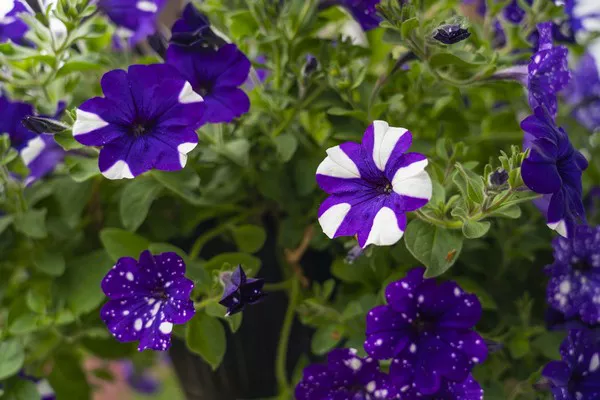African violets (Saintpaulia) are beloved for their charming, velvety blooms that bring a touch of elegance to any indoor space. While these plants are relatively easy to care for, coaxing them into flowering can sometimes pose a challenge. In this comprehensive guide, we will delve into the world of African violets, exploring the factors that influence their flowering and essential care tips to help you cultivate a flourishing display of these delightful blossoms.
African Violets: A Brief Overview
Before delving into the intricacies of getting African violets to flower, it’s crucial to familiarize yourself with their characteristics. African violets are compact, low-growing plants that produce clusters of small, vibrant blooms. These blossoms come in a wide range of colors, including shades of purple, pink, blue, and white. African violets thrive in indoor environments, making them popular choices for homes and offices alike.
Optimal Growing Conditions: Creating the Right Environment
1. Light Requirements
Adequate light is essential for African violets to initiate blooming. Place your plants in bright, indirect light. Avoid exposing them to direct sunlight, as it can scorch their delicate leaves. A north- or east-facing window is often an ideal location for these plants.
2. Temperature and Humidity
Maintain a consistent temperature range of 65-75°F (18-24°C) for African violets. Fluctuations in temperature can hinder their flowering process. Additionally, these plants prefer moderate humidity levels, so consider using a humidity tray or placing a small bowl of water near them to create a suitable microclimate.
3. Potting Mix and Container
Choose a well-draining potting mix specifically formulated for African violets. Their shallow root systems require containers that are proportionate to their size, allowing for proper moisture control. Ensure the pot has drainage holes to prevent waterlogged soil.
Proper Watering Practices: Balance is Key
1. Watering Frequency
African violets have a preference for consistently moist soil, but overwatering can lead to root rot. Water the plants when the top inch of the soil feels dry to the touch. Water from the bottom by placing the pot in a saucer of water, allowing the plant to absorb moisture through the roots.
2. Avoiding Water on Leaves
Water droplets on the leaves can cause unsightly water spots and encourage fungal growth. To prevent this, water the plants from below or water early in the day, allowing time for any water on the foliage to evaporate.
Fertilizing for Blooms: Nourishing Your Plants
1. Balanced Fertilizer
African violets require regular feeding with a balanced, water-soluble fertilizer. Look for a fertilizer specifically formulated for blooming plants, with a balanced N-P-K ratio (nitrogen, phosphorus, potassium). Dilute the fertilizer according to the manufacturer’s instructions and apply it every 4-6 weeks during the growing season.
2. Calcium and Magnesium Supplements
Supplementing your African violets with calcium and magnesium can enhance blooming. These nutrients aid in flower bud development and overall plant health. Use a calcium and magnesium supplement or include crushed eggshells in the soil to provide these essential elements.
Pruning and Deadheading: Encouraging New Growth
1. Removing Spent Blooms
Deadheading, or the removal of spent blooms, is crucial for encouraging African violets to produce new flowers. Gently pinch off the faded flowers at their base to divert the plant’s energy toward new bud formation. Regular deadheading also promotes a tidy appearance.
2. Pruning Leggy Growth
If your African violet becomes leggy (with long, bare stems), consider pruning to encourage compact growth and increased flower production. Trim back the leggy stems to just above a set of healthy leaves to stimulate new growth from the base.
Troubleshooting Flowering Issues
1. Insufficient Light
Inadequate light is a common reason for African violets failing to flower. If your plants are not receiving enough light, consider relocating them to a brighter spot or using supplemental grow lights.
2. Overcrowding
Overcrowding can hinder airflow and light penetration, leading to poor flowering. If you have multiple African violets, make sure they are adequately spaced to allow for healthy growth and airflow.
3. Pot-Bound Plants
African violets that have outgrown their containers can become pot-bound, resulting in reduced flowering. Repot your plants every 1-2 years to provide fresh soil and encourage new growth.
Celebrating Success: Enjoying the Blooms
As you implement these strategies and care practices, you’ll likely start to see your African violets rewarding you with a profusion of vibrant blooms. The sight of these charming flowers can be a true delight, brightening up your living space and bringing a sense of accomplishment to your gardening endeavors.
Conclusion
Cultivating African violets that burst into a profusion of blossoms requires attention to detail, patience, and a nurturing touch. By providing the optimal growing conditions, proper care, and understanding the nuances of their needs, you can unlock the secrets to getting African violets to flower. With a bit of knowledge and dedication, you can transform these charming plants into flourishing displays of velvety blooms that will bring joy and beauty to your indoor space.


